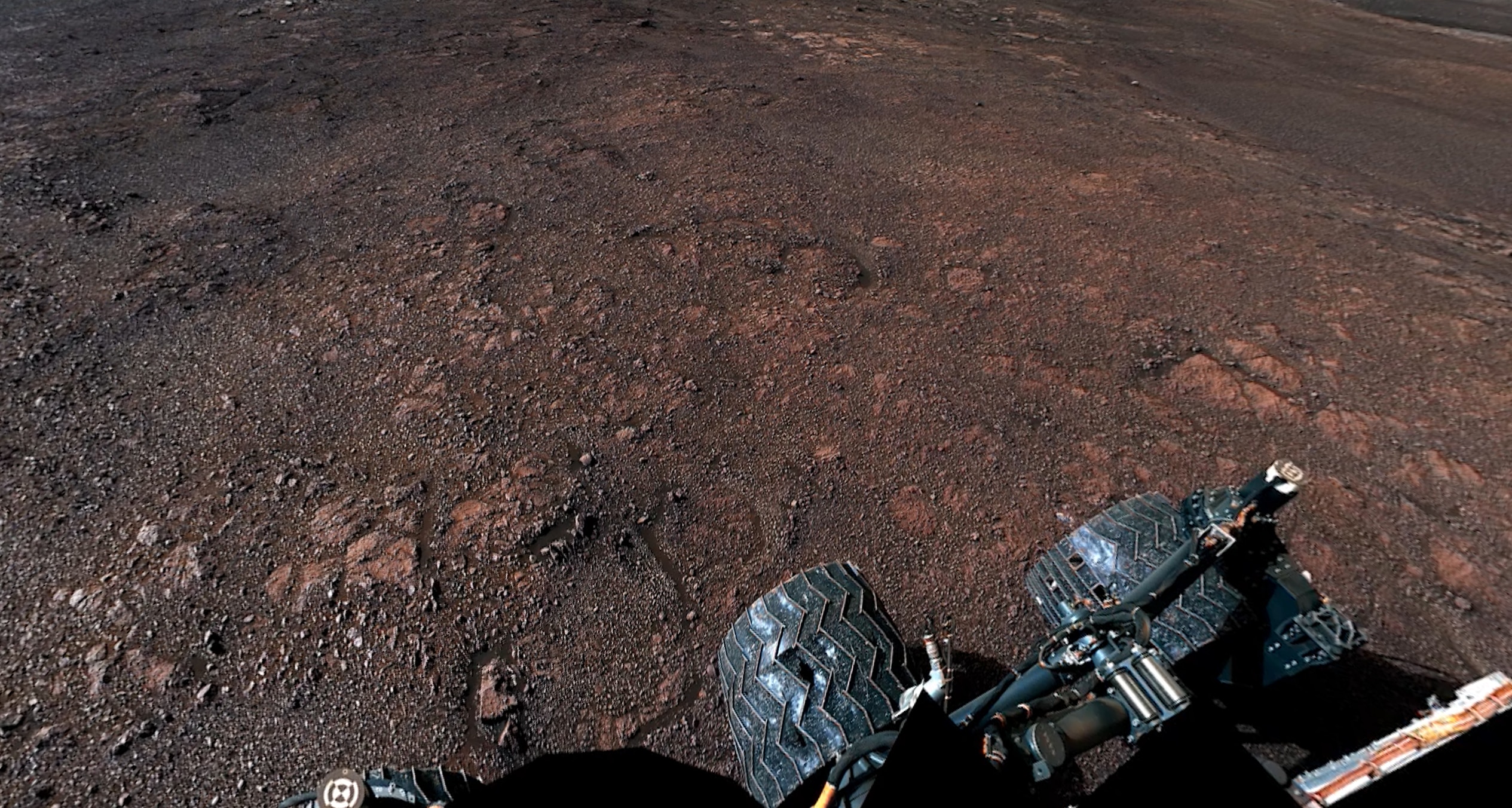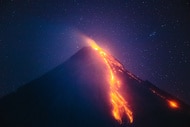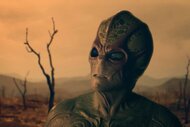Create a free profile to get unlimited access to exclusive videos, sweepstakes, and more!
Curiosity’s awesome 360-degree video makes you think you're standing on Mars

We may have lost an Opportunity on Mars, but that isn’t holding Curiosity back. After hanging out at Vera Rubin Ridge on Mount Sharp since 2017, NASA’s Curiosity rover is crawling over the dusty terrain of the Red Planet again — but not before the Curiosity team released a panoramic video that will really make you think you’re standing right there in moon boots (because we don’t know what Mars boots look like yet).
The video not only gives you a 360-degree view of Mars from the rover’s point of view, but also a closeup of the dust and regolith its wheels have to contend with as it explores what could be a future destination for astronauts. You can see why the drill site it’s standing on is appropriately nicknamed “Rock Hall”. The feeling of actually standing on a planet some 34 million miles from Earth is kind of mind-blowing.
Gaze out into the distance and you will experience a view of the ruddy peak of Mount Sharp, which the rover has been relentlessly climbing since 2014. You can also see the geological features that are Curiosity’s next destinations, including Glen Torridon, which the team believes is a “clay-bearing unit”, and the floor of Gale Crater, from which Mount Sharp rises.
In the wake of Curiosity taking off from Vera Rubin Ridge, the team is using its data in an attempt to figure out how exactly the ridge formed. It has mysteriously resisted erosion while the bedrock was slowly worn away by solar radiation blasts and other factors.
There is still no definite answer as to why the ridge itself has refused to go down, but Curiosity’s observations provided proof that the rocks on the ridge came into being from sediment settling in a lake that evaporated eons ago.
"We've had our fair share of surprises," Curiosity science team member Abigail Fraeman said. "We're leaving with a different perspective of the ridge than what we had before."
Curiosity has also unearthed proof of ancient water on Mars. The rover teamed up with a NASA orbiter exploring Vera Rubin Ridge from above, and when the orbiter picked up on a strong signal for hematite, which often forms in water, Curiosity zoomed in closer. It was able to not only confirm the presence of hematite but also find crystals and other evidence of groundwater that had long since dried up. Because these mineral deposits appeared in patches, the team believes that the flow of groundwater had different impacts on various parts of the ridge.
What the rover saw didn’t always match the view from space. This is why you need more than one robotic eye when it comes to studying the geology of another planet.
"The whole traverse is helping us understand all the factors that influence how our orbiters see Mars," said Fraeman. "Looking up close with a rover allowed us to find a lot more of these hematite signatures. It shows how orbiter and rover science complement one another."
Curiosity has also discovered organic molecules, which may or may not mean that Mars ever supported life, but it could have at least been habitable if the vast desert we see now was once a lush alien paradise. From the POV of that video, even the desert is fascinating.
(via NASA)














